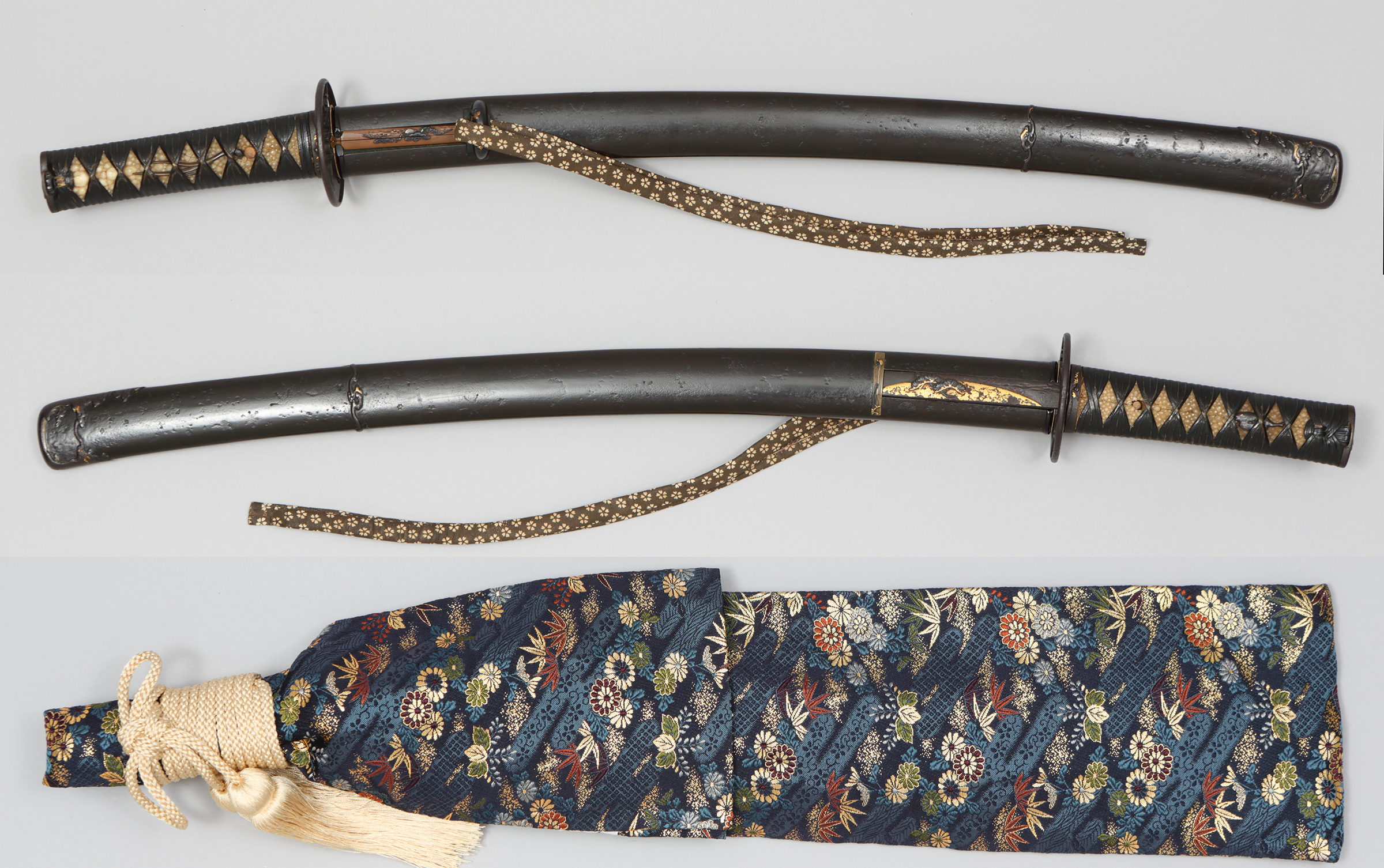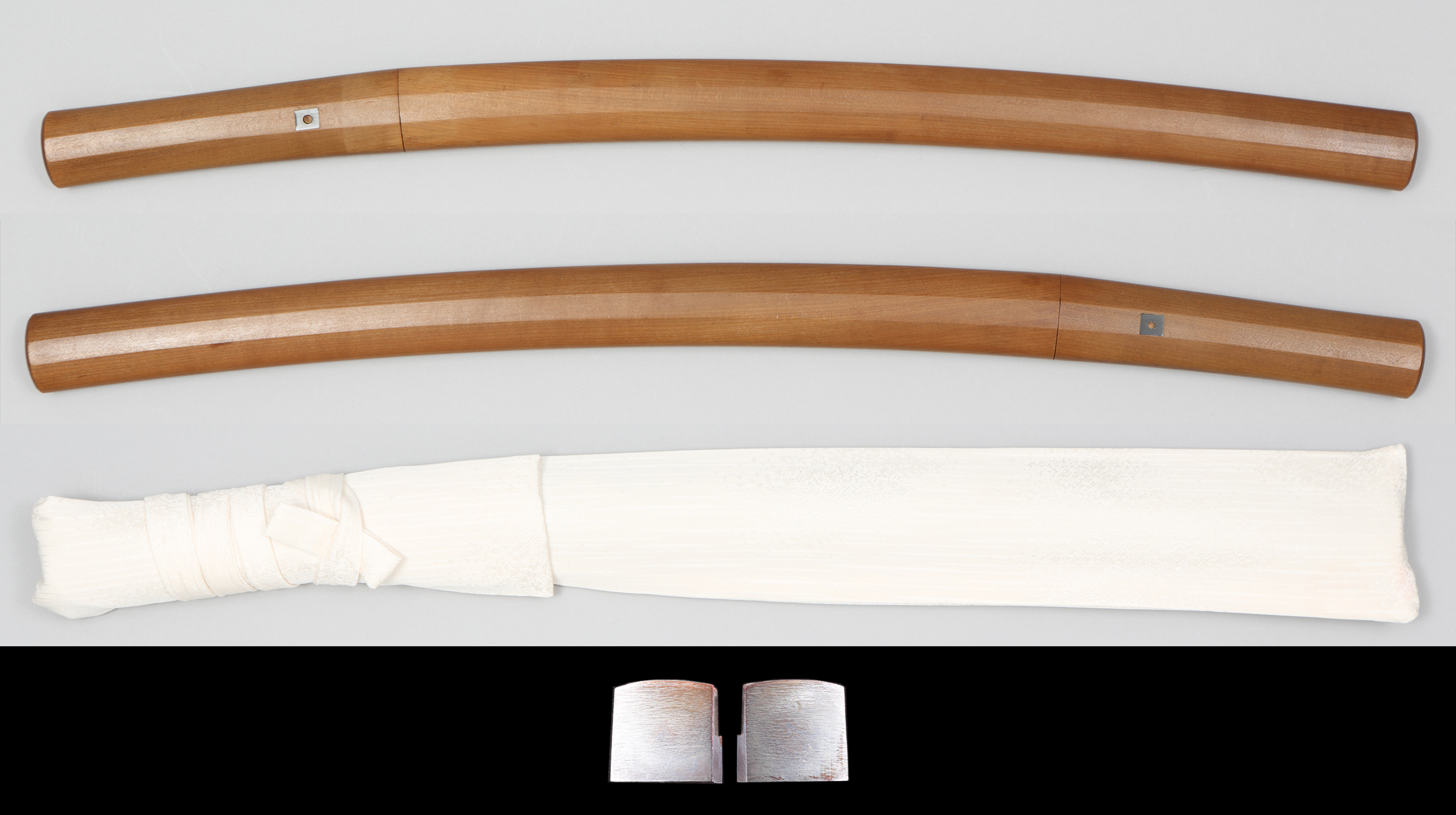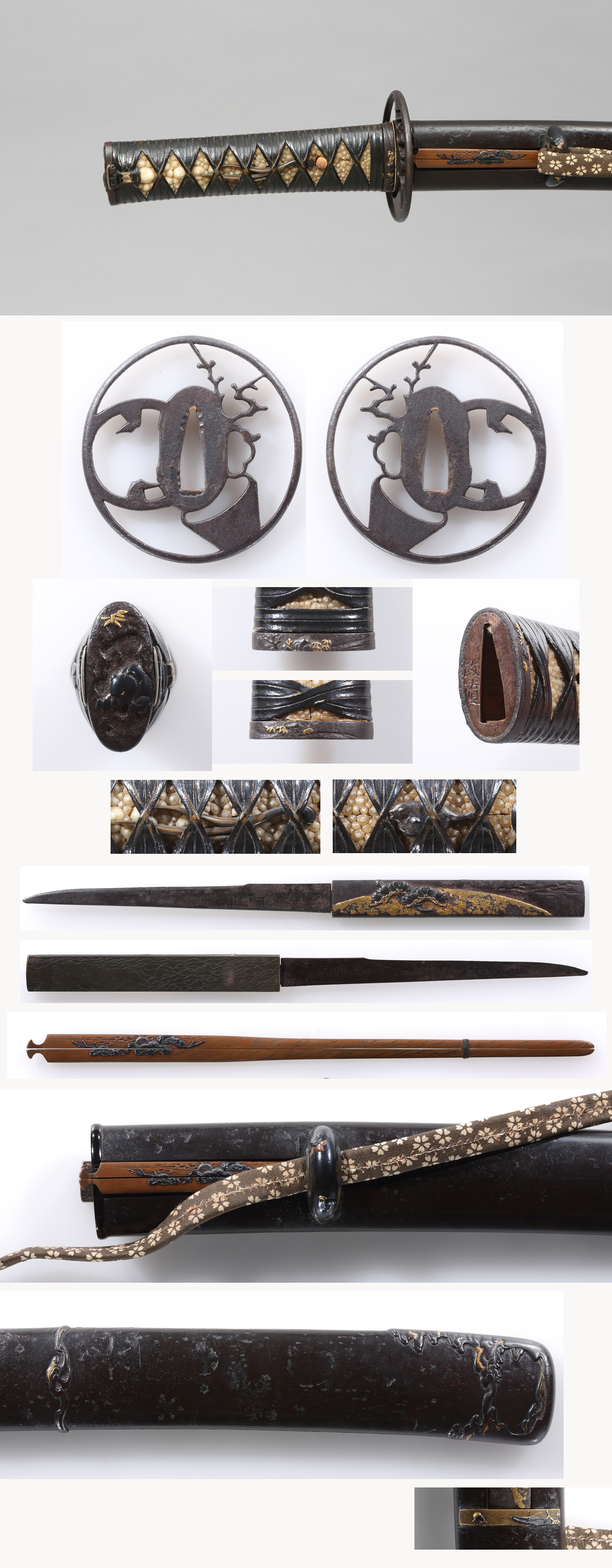[ Feature ]
Form : Shinogi-zukuri. Iori-mune. Both mihaba and kasane are ordinal. A little sori and saki-zori attached. Chû-kissaki extended form.
Engraving : Both on omote and ura sides, there are bo-"hi"s with round stops.
Nakago : Yasurimes are suji-kais and keshos. Saki is shallow kuri-jiri. One hole.
Jigane : Ko-itame-hada, changing masa patterns mixed. Fine jinie attached.
Hamon : Gunomes, cho-ji mixed. Ko-nie attached well which is tends to be become nioi. Fine kin-sens and sunagashis appeared.
Boushi : It runs in deep midare-komi. Saki turns sharply in ko-maru form.
Black Urushi, Scattered scabbard with snowflake design, Wakizashi: bears in running water, menuki (sword mount) with a design of a fugu (blowfish) on a leek, tsuba : design of bowl and tree openwork (sword mount), pine tree with a rising sun design (signature: Otsuryuken Miboku Kaô), cloud, moon and pine tree design split Kougai, chidori design Kurigata (signature: Otsuryuken Miboku kaô), cloud and waves design (signature: Toshinori kaô), Tsuka: dark brown lacquer on white shark's clothing, leather braided upper roll.
[ Highlight ] Koyama Munetsugu was born in Shirakawa, Oshu, in 1803 (Kyouwa 3) and was known by the secular name Sobei. He is said to have studied under Kato Tsunahide and specialised in the Bizen style. He became a swordsmith in the Shirakawa Matsudaira family and moved to Kuwana when the clan was transferred to Kuwana in Seishu, and shortly afterwards to Edo where he worked as a Kuwana clan craftsman. He was highly regarded as a master of the Bizen style from that time onwards and received the title of Bizen-suke in 1845 (Koka 2) at the age of 42. This sword is inscribed with the name of the Azabu area where he lived in Edo and his common name, and was made from the late Bunsei period to the early Meiji period. The fact that there are relatively many works with signatures of actual cutting experiences that date back to the Tempo era suggests that he often carried out test cutting at this time. The 'karigane "雁金" ' in the inscription, otherwise known as 'armpit hair', refers to the line connecting the underarms of the right and left armpits.
This wakizashi is a gorgeous piece of work with a strong spirit, a deeper nioi than usual and a large pattern. The accompanying arrangements remind us of the history of this piece, which was owned by a samurai who loved flowers, birds, wind and moon and had a taste for elegance.
[ Conditions ] Black rust has been removed from the stem. The blade is excellent.







